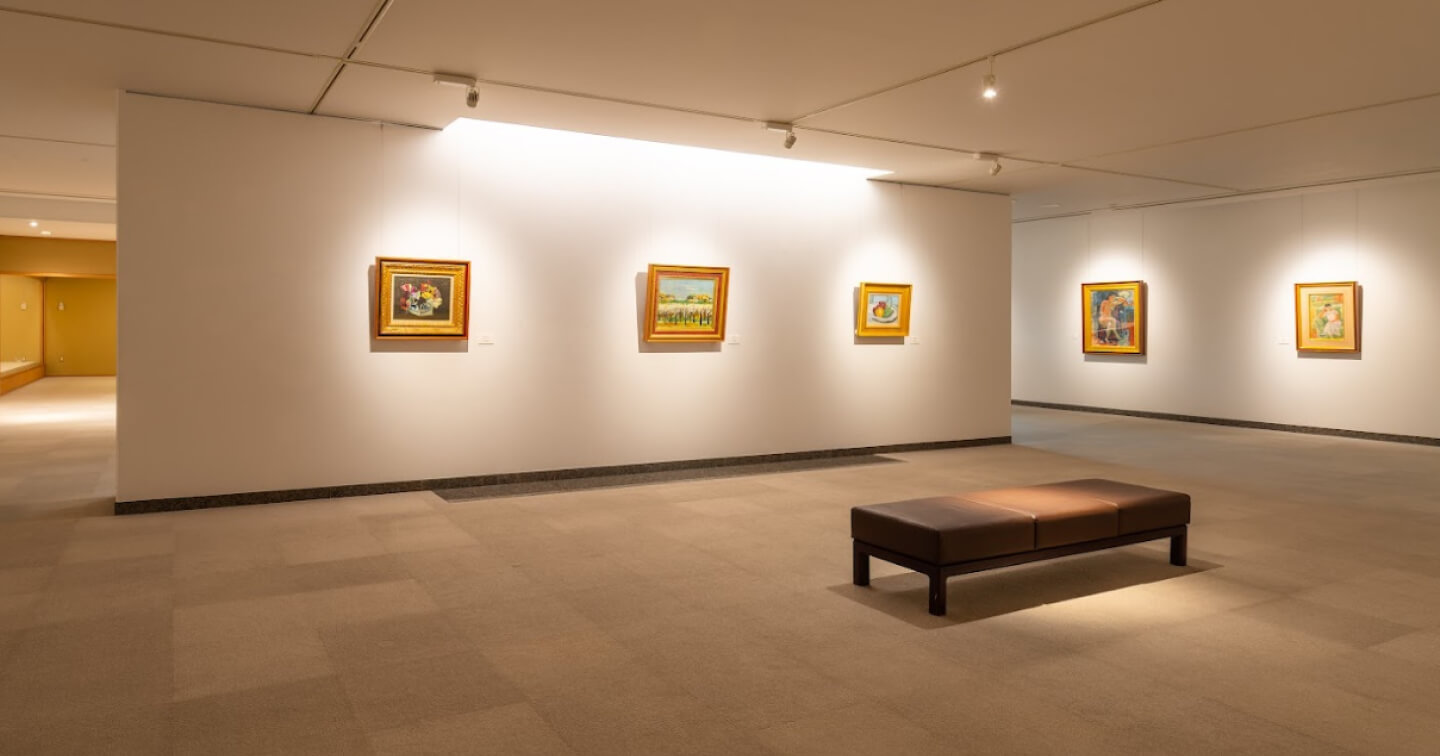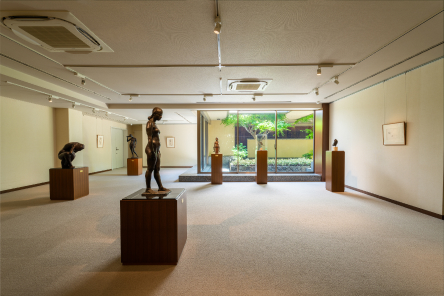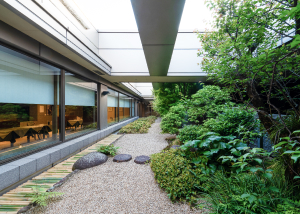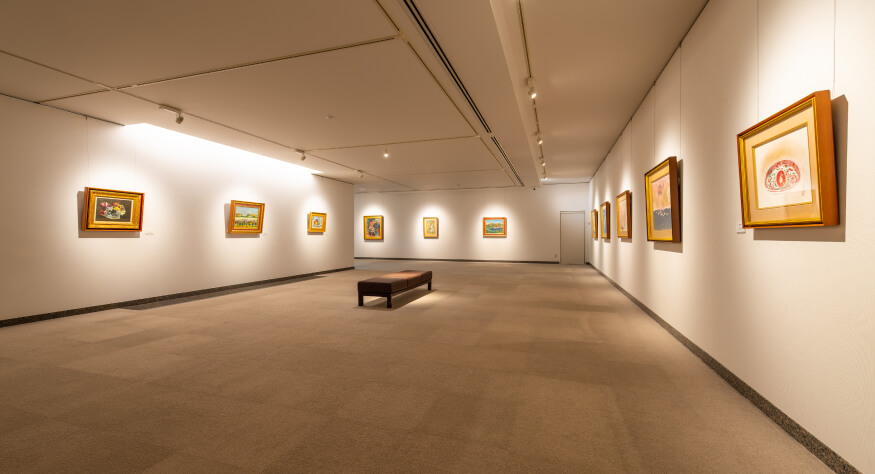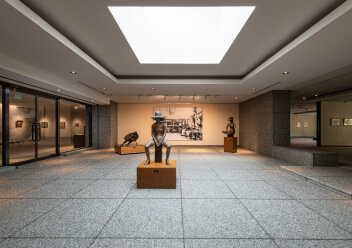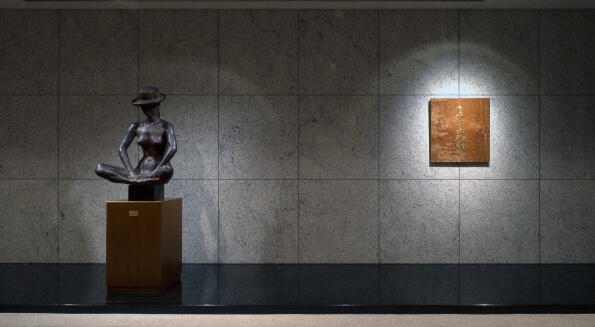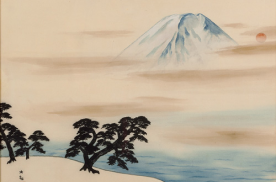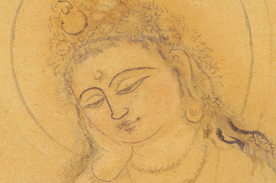About Izumi Museum of Art
Izumi museum of art opened on April 27, 1997 (Heisei 9), based on the private collection of Yoshimasa Yamanishi, the first administrative director of the museum, who was also the founder of IZUMI Co., Ltd. It was designed by Kiyoshi Tanaka, who has worked on many buildings with the traditional Japanese-style architecture. The museum’s name, “Izumi,” comes from the name of the company, and it means a source of hopes and dreams.
Guide
Closed on
Mondays (open in case of national holidays/substitute holidays)
Year-end and New Year holidays (December 30 – January 1)
Temporary closings due to changing exhibitions
Admission Fees
[Permanent Exhibitions]
- General: 300 yen (240 yen)
- Student (High school students or older): 150 yen (120 yen)
- Middle school students or younger: Free of charge
- Fees in ( ) are the group admission fees for 10 visitors or more
[Planned Exhibitions and Special Exhibitions]
- Separate admission fees are applied
Location
Hiroshima, Japan
XSELL Honten 5F, 2-3-1 Shoko Center, Nishi-ku, Hiroshima City
733-0833
Tel: 082-276-2600/ Fax: 082-276-2612
Access
- 12 minutes’ walk from JR Sanyo Line “Shin-Inokuchi Station”12 minutes walk from “ShinInokuchi Station” of JR Sanyo Main Line
- 7 minutes’ walk from Hiroshima Electric Railway Miyajima Line “Kusatsu-minami Station”
- 12 minutes’ walk from Hiroshima Electric Railway Miyajima Line “Shoko Center-iriguchi Station”
- Free parking available *Please use the parking lot at XSELL Honten.
Request for Visitors
In order to preserve the works and maintain an environment where visitors can appreciate them, please keep the following points in mind when you are in the exhibition rooms.
- Please do not touch the exhibition works.
- Please refrain from the following actions.- Talking on your cell phone or smartphone- Taking pictures or videos- Bringing umbrellas or rainwear- Bringing food, plastic bottles or water bottles- Using writing utensils other than pencils
[About the Plaque]
The writing “Izumi Museum of Art” in Japanese used as a plaque and logo mark of the museum, was done by the famed sculptor Churyo Sato (1912-2011), known for figurative sculptures such as “Hat and Summer” and illustrations for picture books such as “The Gigantic Turnip.”
Greeting
The small museum was born from the feelings of deep gratitude that the founder of IZUMI Co., Ltd., Yoshimasa Yamanishi had for the residents of the local community.
Walking and looking at the “heritage of our ancestors,” including works such as paintings and Chinese blue and white potteries, was the joy of Yoshimasa Yamanishi and his wife, Chieko. The collection took form as the couple had more encounters, one by one, with these works.
The inscription of “Izumi Museum of Art” in Japanese by the writing of the famed sculptor, Churyo Sato is a small point of pride of the museum. The words, which translate to “There is no art without consideration for our neighbors,” is one thing that shows the spirit of the museum.
I hope that, through various art activities, the museum will offer food for thought for people of the region including children and will become a place where you can encounter people who love the arts and where there is mutual sympathy, so that the museum will become a space where people can encounter “art that is kind and compassionate to other people.”
I would be incredibly happy if visitors spend a relaxing time here, as an art museum that is everyone can be familiar with.
Michiko Yamanishi
Administrative Director of Izumi Museum of Art
About Collection
The collection features several paintings, sculptures, and Eastern ceramics that Yoshimasa Yamanishi encountered and was impressed by at various points in his life. From the Western-style paintings by Ryuzaburo Umehara and Morikazu Kumagai, to the Japanese-style paintings by Kagaku Murakami and Seison Maeda, as well as the sculptures by Churyo Sato, the small collection has gradually increased in both diversity and depth.
Our museum wishes to become a “space where visitors can leave ordinary life behind, rest their minds, and where new vitality is born.” Our acquisition of new works continues, and has extended to modern art. These efforts have borne fruit with the acquisition of various works including sculptures by Zbyněk Sekal, and dyed works and original illustrations for picture books by Samiro Yunoki.
